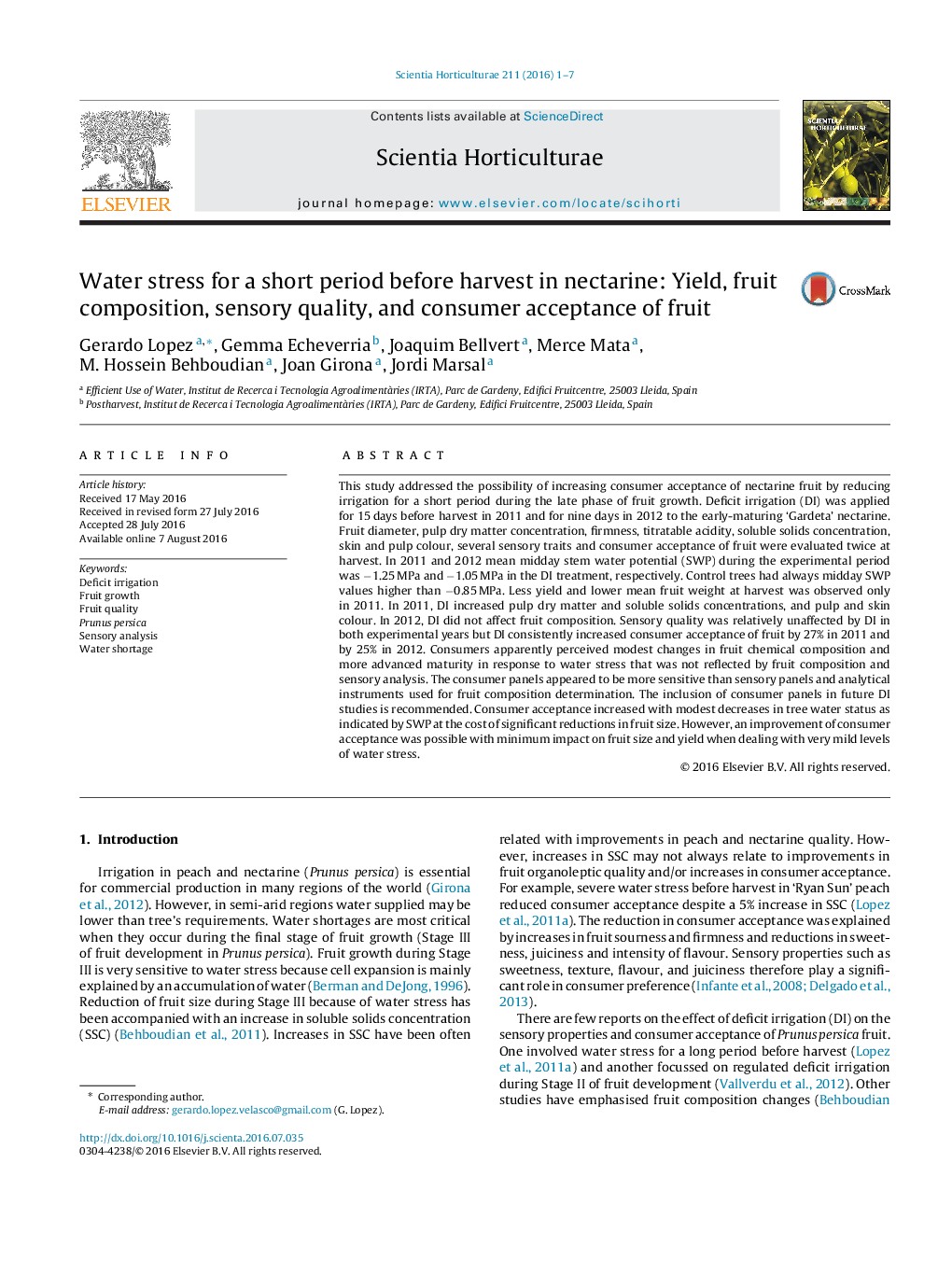| کد مقاله | کد نشریه | سال انتشار | مقاله انگلیسی | نسخه تمام متن |
|---|---|---|---|---|
| 6406056 | 1628787 | 2016 | 7 صفحه PDF | دانلود رایگان |
- Nectarine trees were grown under deficit irrigation for a short period before harvest.
- An improvement of consumer acceptance was possible with minimum impact on fruit size.
- Increases in consumer acceptance were not reflected by changes in fruit composition.
- The use of consumer panels in deficit irrigation studies is recommended.
This study addressed the possibility of increasing consumer acceptance of nectarine fruit by reducing irrigation for a short period during the late phase of fruit growth. Deficit irrigation (DI) was applied for 15Â days before harvest in 2011 and for nine days in 2012 to the early-maturing 'Gardeta' nectarine. Fruit diameter, pulp dry matter concentration, firmness, titratable acidity, soluble solids concentration, skin and pulp colour, several sensory traits and consumer acceptance of fruit were evaluated twice at harvest. In 2011 and 2012 mean midday stem water potential (SWP) during the experimental period was â1.25Â MPa and â1.05Â MPa in the DI treatment, respectively. Control trees had always midday SWP values higher than â0.85Â MPa. Less yield and lower mean fruit weight at harvest was observed only in 2011. In 2011, DI increased pulp dry matter and soluble solids concentrations, and pulp and skin colour. In 2012, DI did not affect fruit composition. Sensory quality was relatively unaffected by DI in both experimental years but DI consistently increased consumer acceptance of fruit by 27% in 2011 and by 25% in 2012. Consumers apparently perceived modest changes in fruit chemical composition and more advanced maturity in response to water stress that was not reflected by fruit composition and sensory analysis. The consumer panels appeared to be more sensitive than sensory panels and analytical instruments used for fruit composition determination. The inclusion of consumer panels in future DI studies is recommended. Consumer acceptance increased with modest decreases in tree water status as indicated by SWP at the cost of significant reductions in fruit size. However, an improvement of consumer acceptance was possible with minimum impact on fruit size and yield when dealing with very mild levels of water stress.
Journal: Scientia Horticulturae - Volume 211, 1 November 2016, Pages 1-7
